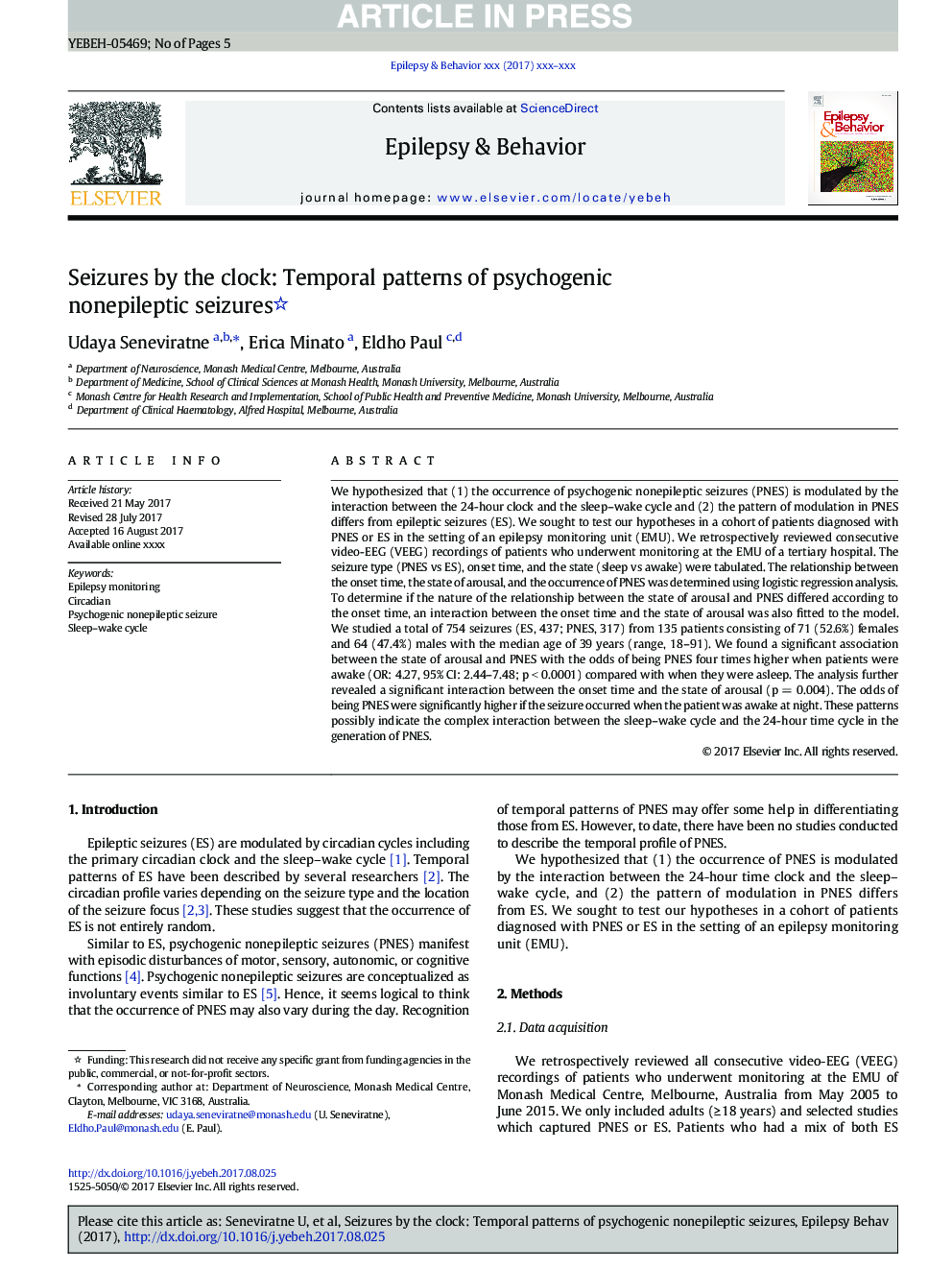| کد مقاله | کد نشریه | سال انتشار | مقاله انگلیسی | نسخه تمام متن |
|---|---|---|---|---|
| 8683890 | 1579816 | 2017 | 5 صفحه PDF | دانلود رایگان |
عنوان انگلیسی مقاله ISI
Seizures by the clock: Temporal patterns of psychogenic nonepileptic seizures
ترجمه فارسی عنوان
تشنجهای ساعت: الگوهای زمانی تشنجهای غیرقابل تشخیصی روانپریشی
دانلود مقاله + سفارش ترجمه
دانلود مقاله ISI انگلیسی
رایگان برای ایرانیان
کلمات کلیدی
نظارت بر صرع، دوران کودکی، تشنج ناخوشایندی روانی، خواب بیدار شدن چرخه،
موضوعات مرتبط
علوم زیستی و بیوفناوری
علم عصب شناسی
علوم اعصاب رفتاری
چکیده انگلیسی
We hypothesized that (1) the occurrence of psychogenic nonepileptic seizures (PNES) is modulated by the interaction between the 24-hour clock and the sleep-wake cycle and (2) the pattern of modulation in PNES differs from epileptic seizures (ES). We sought to test our hypotheses in a cohort of patients diagnosed with PNES or ES in the setting of an epilepsy monitoring unit (EMU). We retrospectively reviewed consecutive video-EEG (VEEG) recordings of patients who underwent monitoring at the EMU of a tertiary hospital. The seizure type (PNES vs ES), onset time, and the state (sleep vs awake) were tabulated. The relationship between the onset time, the state of arousal, and the occurrence of PNES was determined using logistic regression analysis. To determine if the nature of the relationship between the state of arousal and PNES differed according to the onset time, an interaction between the onset time and the state of arousal was also fitted to the model. We studied a total of 754 seizures (ES, 437; PNES, 317) from 135 patients consisting of 71 (52.6%) females and 64 (47.4%) males with the median age of 39 years (range, 18-91). We found a significant association between the state of arousal and PNES with the odds of being PNES four times higher when patients were awake (OR: 4.27, 95% CI: 2.44-7.48; p < 0.0001) compared with when they were asleep. The analysis further revealed a significant interaction between the onset time and the state of arousal (p = 0.004). The odds of being PNES were significantly higher if the seizure occurred when the patient was awake at night. These patterns possibly indicate the complex interaction between the sleep-wake cycle and the 24-hour time cycle in the generation of PNES.
ناشر
Database: Elsevier - ScienceDirect (ساینس دایرکت)
Journal: Epilepsy & Behavior - Volume 76, November 2017, Pages 71-75
Journal: Epilepsy & Behavior - Volume 76, November 2017, Pages 71-75
نویسندگان
Udaya Seneviratne, Erica Minato, Eldho Paul,
